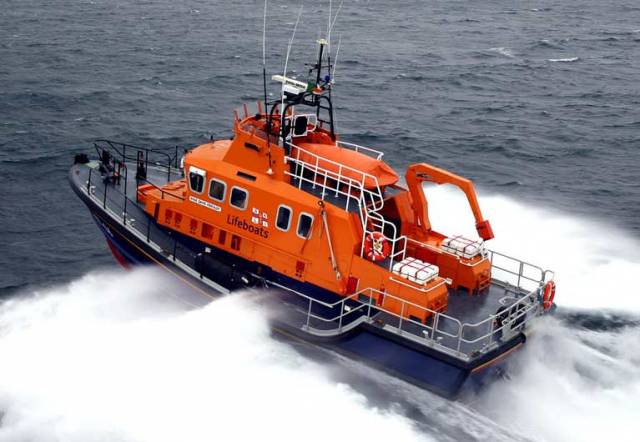Aran Islands RNLI carried out a medical evacuation this morning during Storm Lorenzo.
The volunteer crew were asked to launch their all-weather Severn class lifeboat at 9.51am today at the request of the Irish Coast Guard.
A lady on Inis Meain had sustained an injury from an earlier fall and required further medical attention.
The lifeboat launched under Coxswain John O’Donnell and a full crew onboard and headed straight for Inis Meain.
Weather conditions at the time of launching were described as having rough seas with a 3.5m swell rising, and a southeasterly force 8 wind blowing.
Once the patient was transferred safely aboard under the supervision of the volunteer crew members, the lifeboat headed straight for Rossaveal harbour where the lady was handed into the care of the waiting ambulance crew.
Speaking after the call out, Aran Islands RNLI Coxswain John O’Donnell said: ‘The conditions at sea this morning were really challenging but despite Storm Lorenzo, our willing and able volunteer crew members selflessly didn’t hesitate to answer the call and ensure the patient was looked after until she was safely transferred to the ambulance in Rossaveal. We would like to wish the patient a speedy recovery.
‘As Storm Lorenzo continues, we would remind everybody to take note of the weather forecast and Stay Back – Stay Dry – Stay High.
‘If you see someone in difficulty or are concerned about somebody’s whereabouts on or near the water use VHF channel 16 or dial 112, and ask for the Coast Guard.’
































































